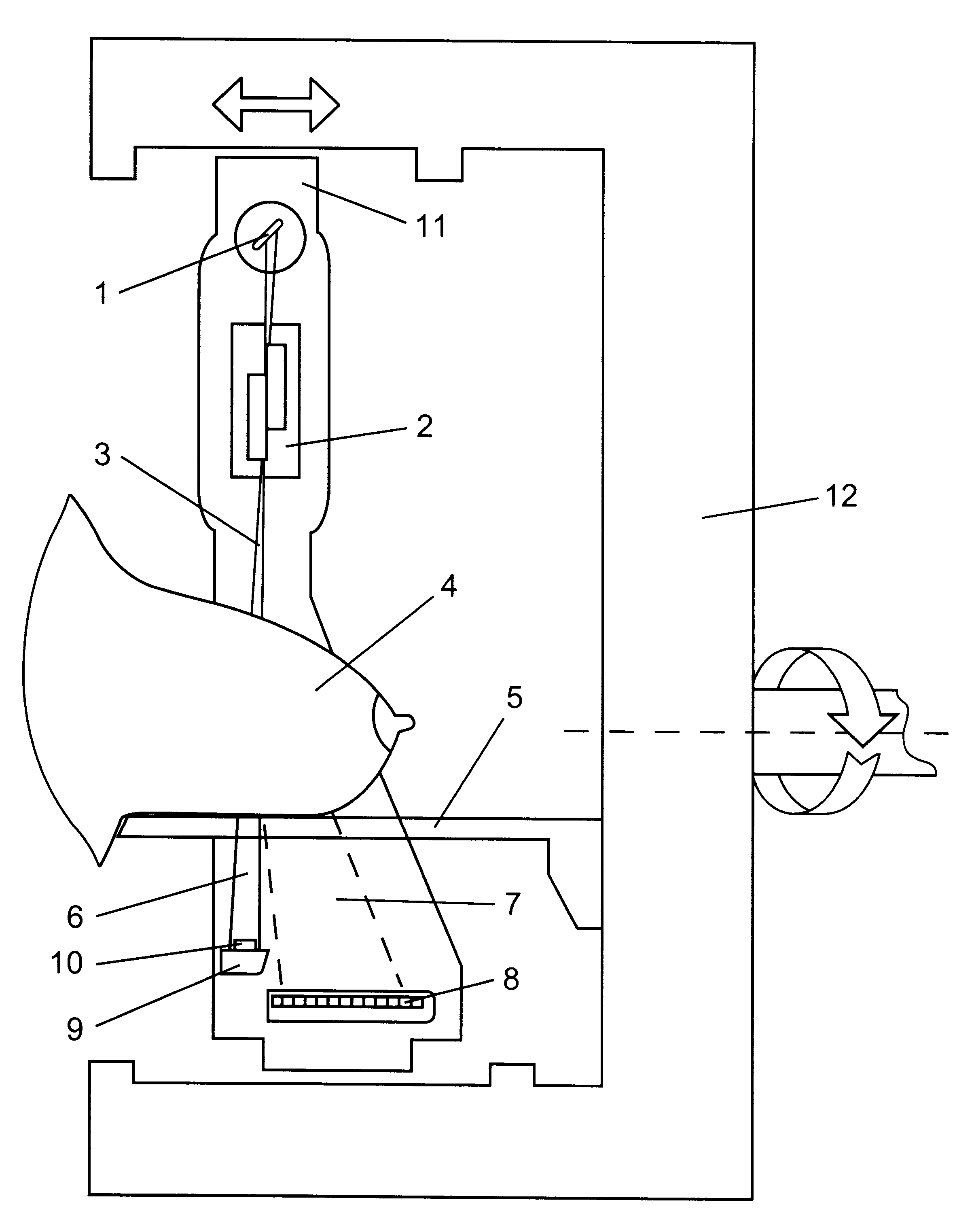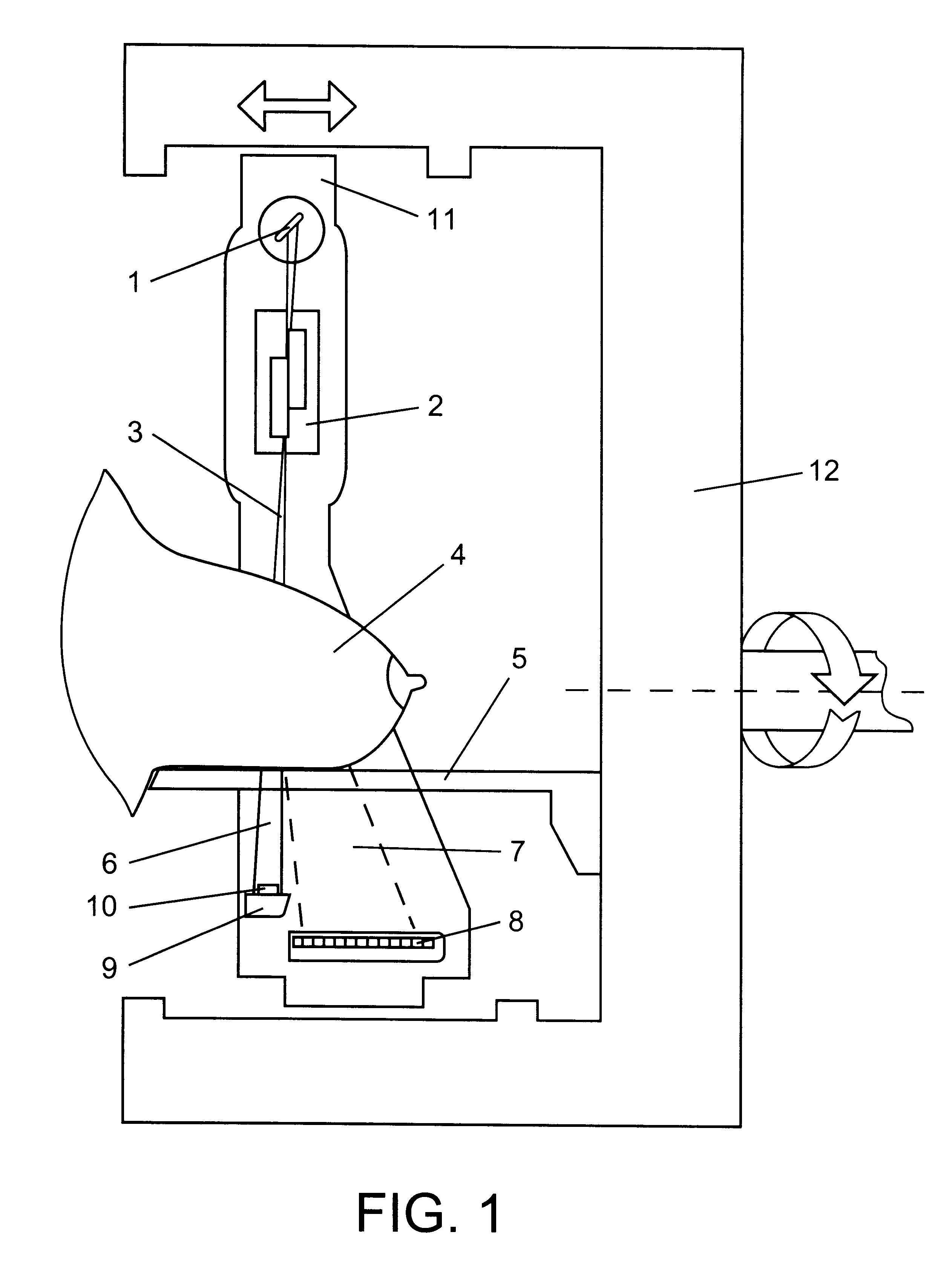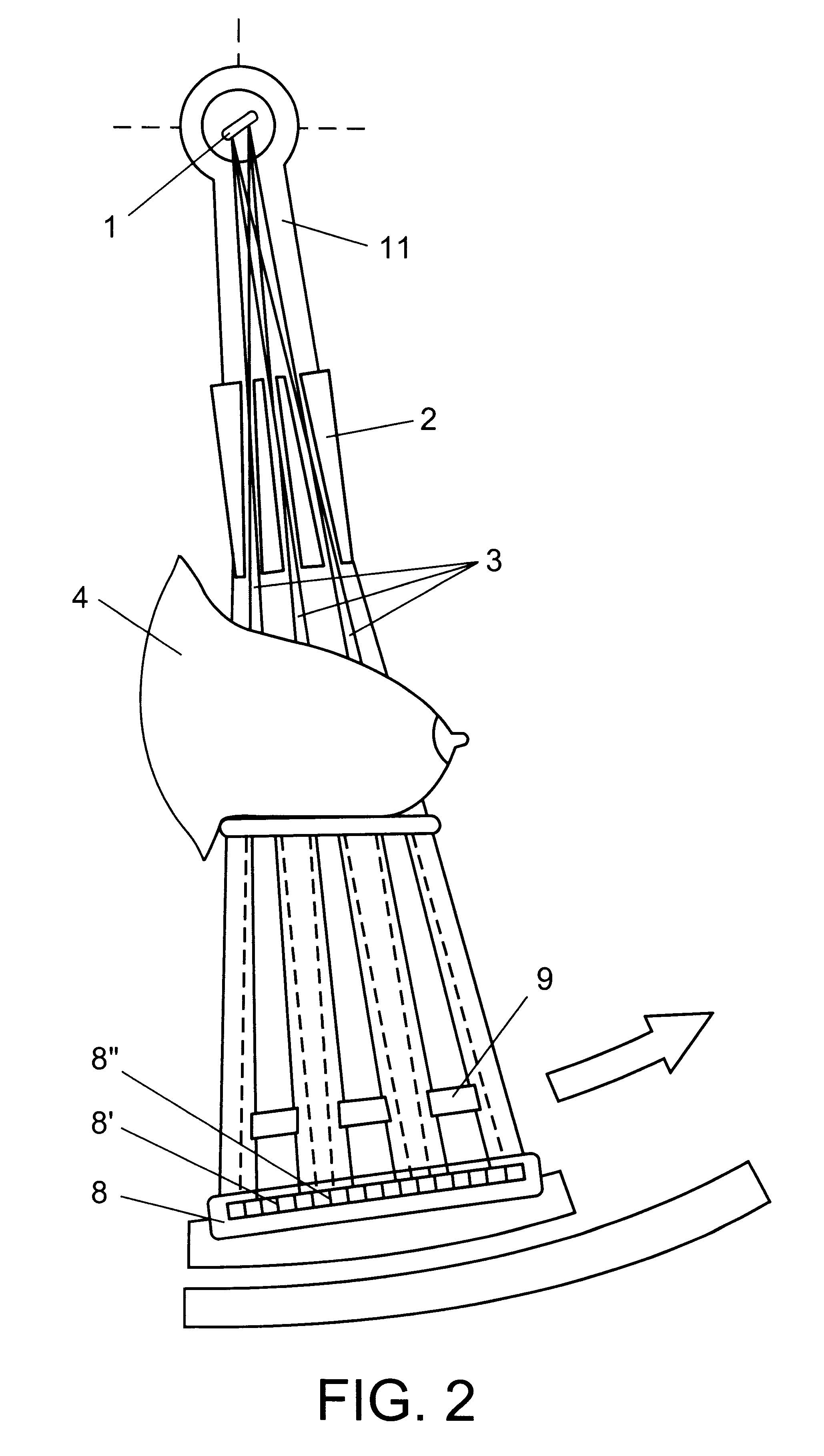Reduced-angle mammography device and variants
a mammography device and reduced angle technology, applied in the direction of instruments, patient positioning for diagnostics, applications, etc., can solve the problems of difficult to determine minor changes in tissues in early stages of a disease, patient pain and discomfort, and the above-described device has a relatively low sensitivity to radiation scattered in the immediate vicinity of the primary beam
- Summary
- Abstract
- Description
- Claims
- Application Information
AI Technical Summary
Benefits of technology
Problems solved by technology
Method used
Image
Examples
Embodiment Construction
Devices are operated as follows. Radiation from source 1 of a penetrating radiation, for example, X-ray tube, is formed using collimator 2 into planar fan-shaped beam 3 (FIG. 1), or a number of fan-shaped beams (as in FIG. 2), and is directed to tested object 4 disposed on holder 5. On the path of the passed 6 through the object and scattered 7 radiation, positioned is position-sensitive detector 8 in the form of an array of radiation-sensitive elements intended for registration of the reduced-angle scattering, and also radiation-opaque filter 9 whereon positioned is detector 10 for registration of the radiation passed through the object. The registration system can be arranged in another way: filter 9 can be translucent, detector 10 can be disposed downstream of the filter. All instruments intended to form the radiation field and perform registration are disposed on frame 11 installed in turn on base 12. The frame on guides is moved in the direction normal to the radiation beam pla...
PUM
 Login to View More
Login to View More Abstract
Description
Claims
Application Information
 Login to View More
Login to View More - R&D
- Intellectual Property
- Life Sciences
- Materials
- Tech Scout
- Unparalleled Data Quality
- Higher Quality Content
- 60% Fewer Hallucinations
Browse by: Latest US Patents, China's latest patents, Technical Efficacy Thesaurus, Application Domain, Technology Topic, Popular Technical Reports.
© 2025 PatSnap. All rights reserved.Legal|Privacy policy|Modern Slavery Act Transparency Statement|Sitemap|About US| Contact US: help@patsnap.com



